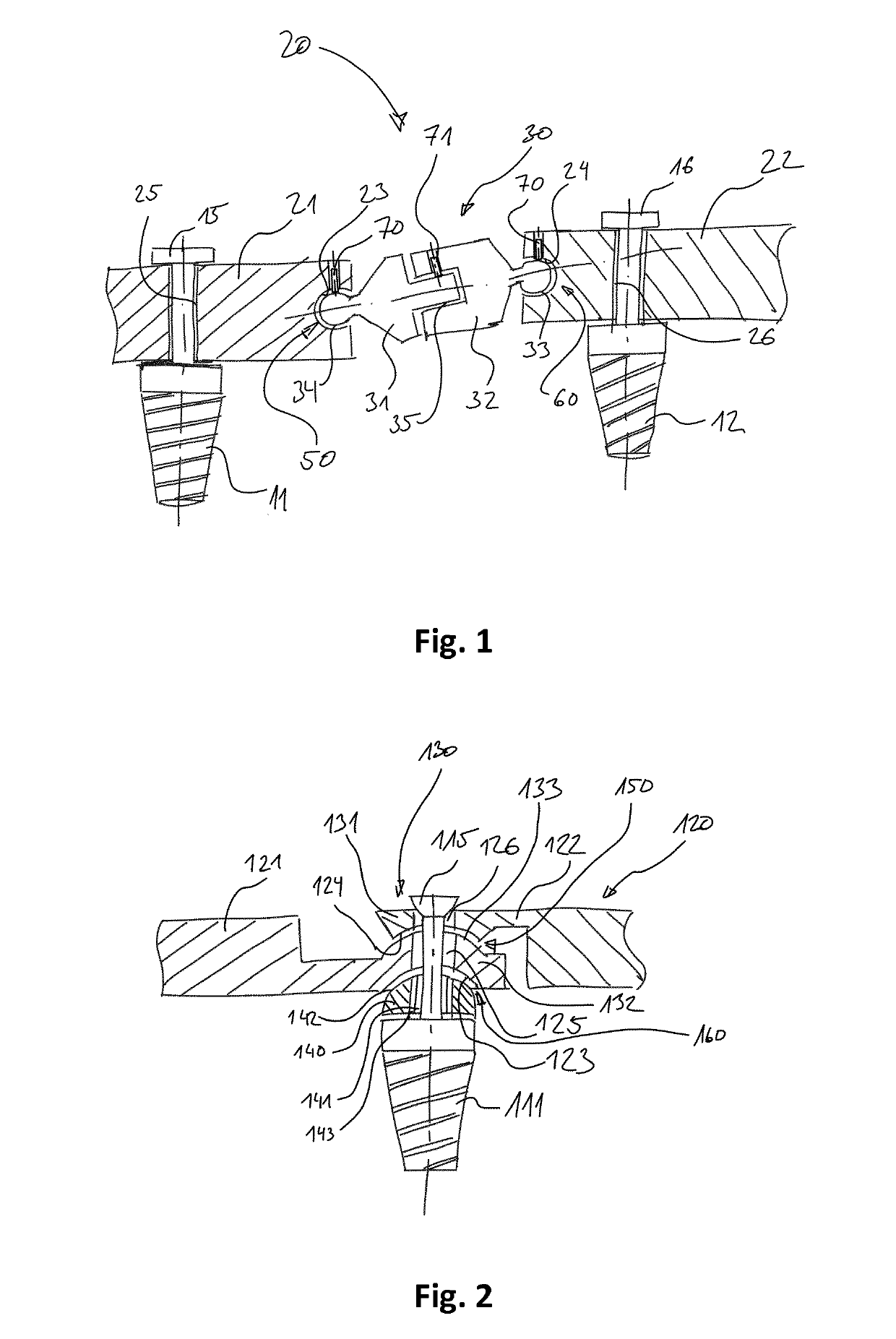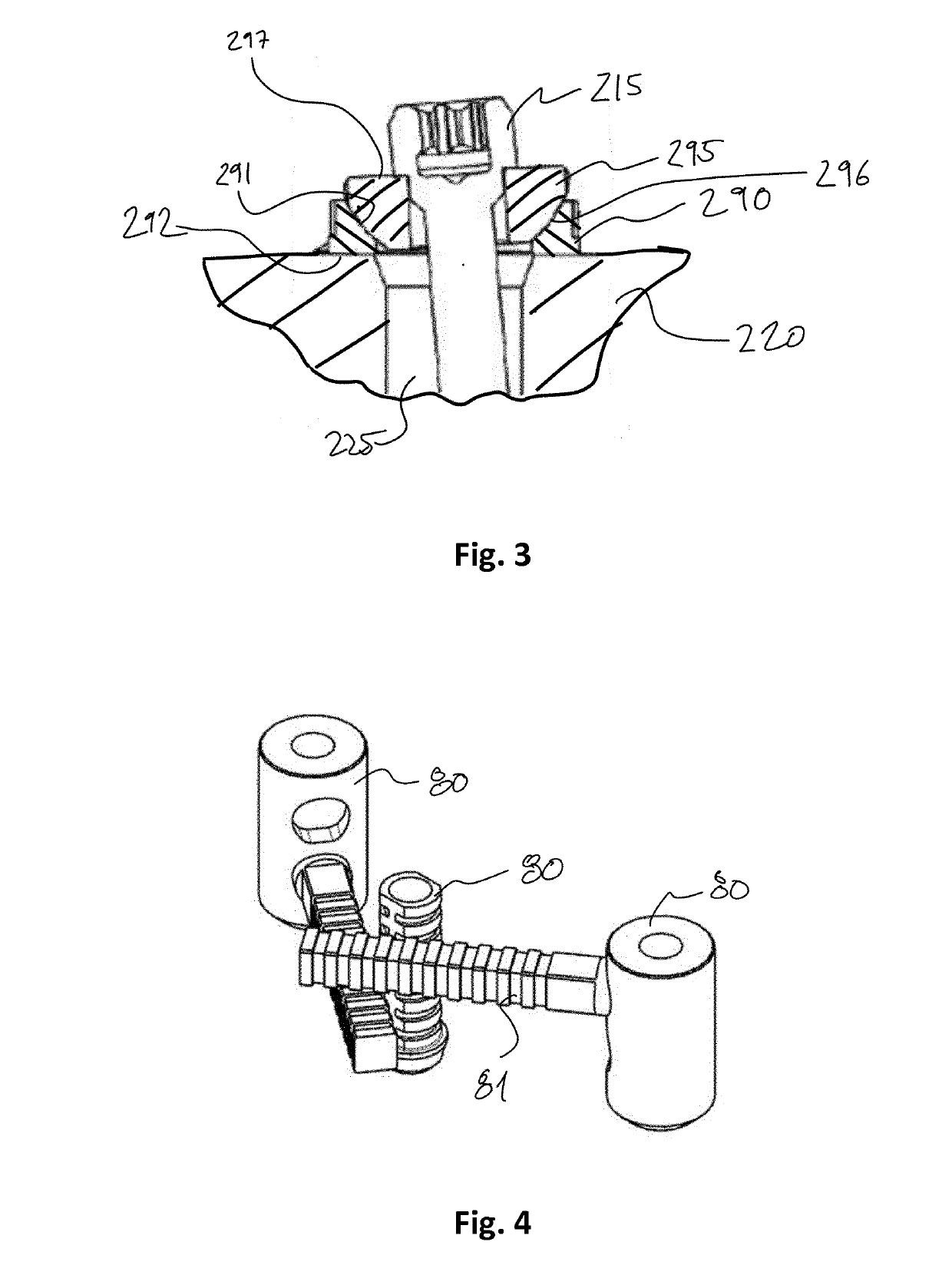Dental component for a dental restoration and method for assembling the dental component
- Summary
- Abstract
- Description
- Claims
- Application Information
AI Technical Summary
Benefits of technology
Problems solved by technology
Method used
Image
Examples
Embodiment Construction
[0069]The dental component 20 shown in FIG. 1 as well as the dental component 120 shown in FIG. 2 are used in building up a dental prosthesis for the replacement of teeth in a mandible or maxilla. In other words, the dental prosthesis serves serves as as replacement of at least a part of a dental arch. In order to provide efficient support for the dental prosthesis, the dental component 20, 120 is attached to at least two, preferably three dental implants 11, 12, 111. Nonetheless, as will be appreciated by the skilled person, the dental component 20, 120 may also be intended for a connection with more than two implants, such as three, four, five or six implants for creating a dental prosthesis. This is simply achieved by adapting the size of the dental component 20, 120.
[0070]Turning to FIG. 1, the dental component 20 comprises two dental subcomponents 21, 22. Since the dental component 20 is intended for a dental restoration of at least a part of a dental arch, it is elongated and ...
PUM
 Login to View More
Login to View More Abstract
Description
Claims
Application Information
 Login to View More
Login to View More - R&D
- Intellectual Property
- Life Sciences
- Materials
- Tech Scout
- Unparalleled Data Quality
- Higher Quality Content
- 60% Fewer Hallucinations
Browse by: Latest US Patents, China's latest patents, Technical Efficacy Thesaurus, Application Domain, Technology Topic, Popular Technical Reports.
© 2025 PatSnap. All rights reserved.Legal|Privacy policy|Modern Slavery Act Transparency Statement|Sitemap|About US| Contact US: help@patsnap.com


